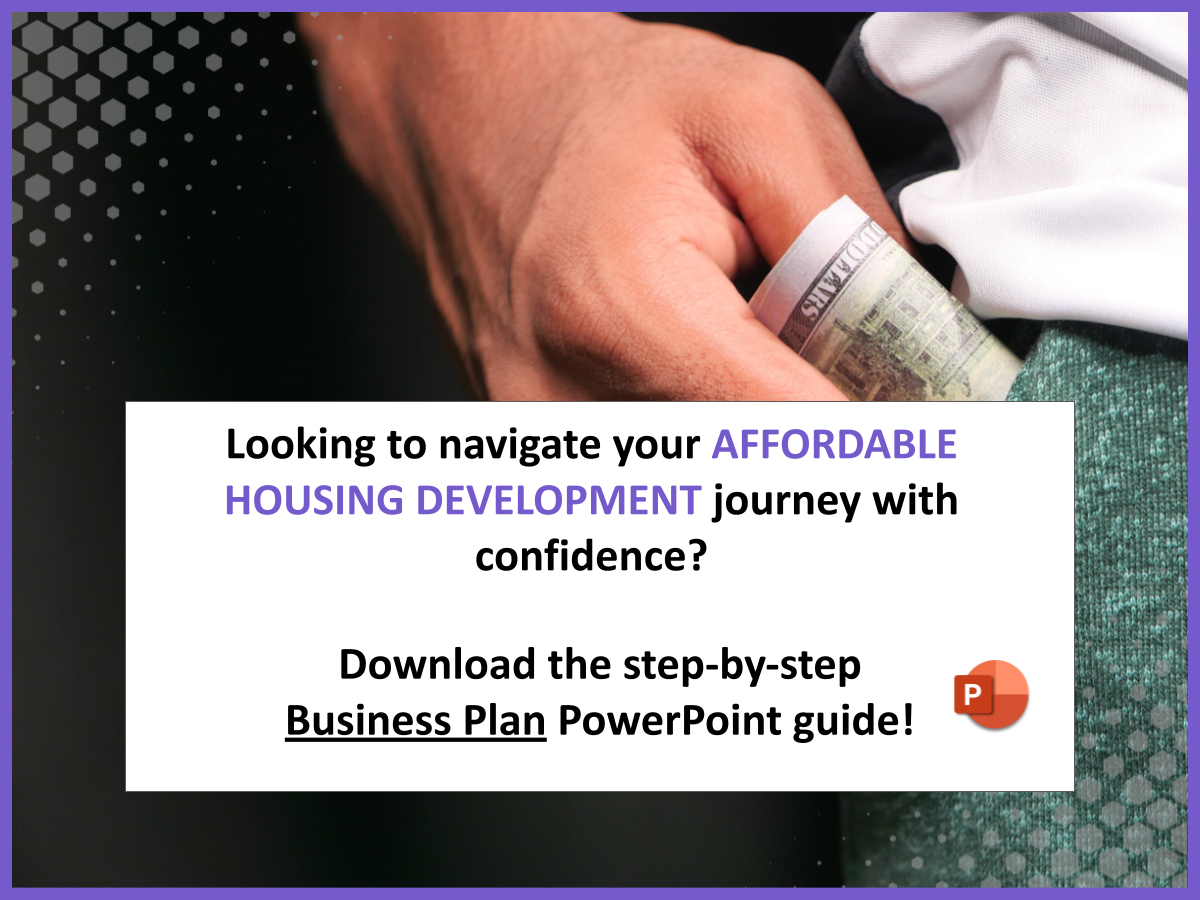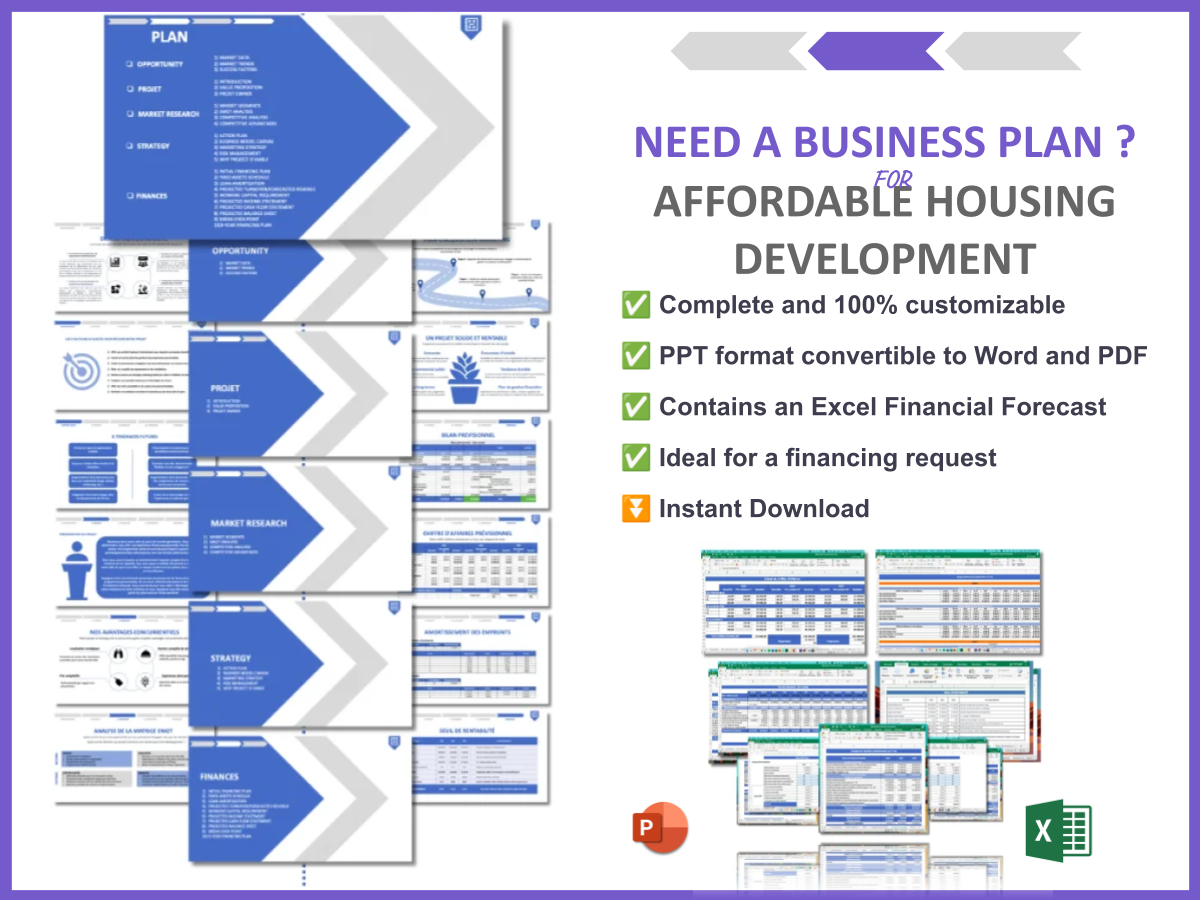How to start an affordable housing development? You’re not alone in wondering about this vital topic! In many communities across the country, the demand for affordable housing is skyrocketing, leaving countless families struggling to find suitable places to live. Did you know that nearly 30% of households in the U.S. face housing cost burdens? This shocking statistic underlines the urgent need for affordable housing solutions. In this article, we’ll explore the essential steps to create an affordable housing development, from understanding community needs to securing funding and managing your project successfully.
- Understand the need for affordable housing development.
- Conduct thorough market research.
- Choose the right location for your development.
- Create a detailed business plan.
- Determine the legal structure for your development.
- Secure funding and financial resources.
1. Understand the Need for Affordable Housing Development
Starting an affordable housing development begins with recognizing the urgent need for such projects in many communities. The first step is to analyze the specific demographics of your target area. Here are some points to consider:
- Identify the local population’s income levels.
- Examine current housing shortages in your area.
- Consider the impact of affordable housing on community stability.
Research indicates that affordable housing can significantly improve the quality of life for residents, reduce homelessness, and foster economic growth. When you understand the local housing landscape, you can tailor your development to meet genuine community needs.
2. Conduct Thorough Market Research for Your Development
When asking how to start an affordable housing development, market research should be at the top of your list. A thorough analysis of current housing trends, demand, and competition is essential for shaping your project’s direction. Here’s how to get started:
- Analyze current housing market trends in your area.
- Conduct surveys to gather community insights on housing needs.
- Utilize public data to examine demographics and housing statistics.
To provide a clearer view of your research methods, consider the following table:
| Research Method | Purpose |
|---|---|
| Surveys | Gather community insights on housing needs. |
| Focus Groups | Understand community perceptions and challenges. |
| Public Data | Analyze demographics and housing statistics. |
Effective market research will help you identify gaps in the market and tailor your affordable housing development to fulfill unmet needs, ensuring your project has the best chance of success.
3. Choose the Right Location for Your Development
The location of your affordable housing development can make or break your project. When it comes to selecting the ideal site, several factors come into play. Here are some crucial aspects to consider:
- Access to Public Transportation: Ensure your development is conveniently located near bus and train lines to enhance mobility for residents.
- Proximity to Essential Services: Look for areas close to schools, grocery stores, healthcare facilities, and employment opportunities.
- Neighborhood Safety: Assess crime rates and overall safety to create a secure environment for families.
Additionally, it’s essential to evaluate local zoning laws and land use regulations to avoid potential legal issues. For instance, if the land is zoned for commercial use only, it may require rezoning before you can proceed with your development. Consider creating a table to summarize your location analysis:
| Criteria | Importance Level |
|---|---|
| Access to Public Transportation | High |
| Proximity to Essential Services | High |
| Neighborhood Safety | Medium |
By carefully considering these factors, you can select a location that not only meets the needs of your future residents but also enhances the overall success of your affordable housing development.
4. Create a Detailed Business Plan for Your Development
When learning how to start an affordable housing development, creating a solid business plan is essential. This document will serve as your roadmap, outlining your vision, mission, and the specific steps needed to achieve your goals. Here’s what to include:
- Project Goals and Objectives: Clearly define what you hope to accomplish with your development.
- Financial Projections: Include estimates for costs, revenues, and potential funding sources.
- Marketing and Community Engagement Plans: Outline how you will attract tenants and engage with the community.
I recommend checking out this business plan template for Affordable Housing Development. It’s super detailed and can save you a ton of time! A well-structured business plan will not only guide you through the development process but will also be crucial when seeking funding and partnerships.
Incorporating a clear timeline and milestones into your business plan can help you track progress and make adjustments as necessary. By breaking your plan into actionable steps, you can maintain focus and momentum throughout your project.
5. Determine the Legal Structure for Your Development
Deciding on the legal structure of your affordable housing development is crucial for liability, tax purposes, and operational efficiency. Your choice can influence everything from how profits are taxed to your personal liability in the project. Here are the most common legal structures to consider:
- Limited Liability Company (LLC): Provides personal liability protection while allowing for flexible management.
- Partnership: Involves two or more individuals sharing profits and responsibilities; however, personal liability can be a concern.
- Non-Profit Organization: Focuses on community benefit rather than profit, which can open up access to grants and tax exemptions.
Consulting with a legal expert is highly recommended to ensure compliance with local laws and regulations. Understanding the pros and cons of each structure can help you make an informed decision that aligns with your project’s goals.
Here’s a table summarizing the key features of each legal structure:
| Legal Structure | Key Features | Best For |
|---|---|---|
| LLC | Limited liability, flexible management | Developers seeking protection and flexibility |
| Partnership | Shared profits and responsibilities, higher risk | Collaborative projects with trusted partners |
| Non-Profit | Tax exemptions, grant eligibility | Community-focused initiatives |
Ultimately, your choice of legal structure will shape your project’s framework and operational strategy, so take the time to evaluate your options carefully.
6. Secure Funding and Financial Resources for Your Development
Funding is often the biggest challenge for affordable housing projects. To kickstart your development, explore various financing options that can provide the necessary capital. Here’s a breakdown of some potential sources:
- Government Grants: Many local, state, and federal programs offer financial support for affordable housing initiatives.
- Low-Income Housing Tax Credits: These credits incentivize developers to create affordable housing by providing tax benefits.
- Private Investments: Building relationships with local banks and investors interested in social impact can open doors to additional funding.
When pursuing funding, it’s essential to have a solid financial plan that outlines your project’s costs and projected revenues. This will not only help you secure funding but also provide a clear picture of your project’s financial health.
To help you visualize your funding strategy, consider the following table:
| Funding Source | Description | Pros |
|---|---|---|
| Government Grants | Financial support from local, state, or federal programs. | No repayment required, promotes community welfare. |
| Low-Income Housing Tax Credits | Tax incentives for developers to create affordable housing. | Reduces overall project costs, attractive to investors. |
| Private Investors | Funding from individuals or organizations interested in social impact. | Flexibility in terms, potential for large sums. |
By diversifying your funding sources and developing a comprehensive financial strategy, you can enhance your chances of successfully launching your affordable housing development.
7. Register Your Business and Obtain Necessary Permits
Once you’ve secured funding and finalized your project plans, it’s time to make your affordable housing development official. Registering your business is a crucial step that establishes your legal identity. Here’s how to go about it:
- File for Business Registration: Depending on your chosen legal structure, register your business with the appropriate state authorities.
- Obtain Construction Permits: Before breaking ground, ensure that you have all necessary construction permits from local government agencies.
- Check Local Requirements: Different areas may have additional requirements, such as environmental assessments or community impact studies.
Each of these steps is vital to ensure that your project complies with local laws and regulations, minimizing the risk of delays or legal complications. Additionally, having the proper permits in place can enhance your credibility with investors and community members.
It’s wise to consult with local officials or a legal expert familiar with real estate development to guide you through this process. They can provide valuable insights into local regulations and help you navigate potential obstacles.
8. Develop a Marketing Strategy for Your Housing Development
After laying the groundwork for your affordable housing development, the next step is to create a robust marketing strategy to attract tenants and investors. A well-crafted marketing plan is crucial for generating interest and ensuring the success of your project. Here are some strategies to consider:
- Community Engagement: Host informational sessions to educate the community about your project and gather feedback.
- Online Presence: Utilize social media platforms and a dedicated website to reach a wider audience. Share updates, success stories, and available units.
- Local Partnerships: Collaborate with local organizations, schools, and businesses to promote your development and build community support.
Measuring the effectiveness of your marketing efforts is also essential. Track engagement metrics and adapt your strategy based on what resonates with your audience. For a more structured approach, consider implementing the following table to outline your marketing tactics:
| Tactic | Purpose | Expected Outcome |
|---|---|---|
| Community Engagement Events | Educate and gather feedback from residents. | Build trust and community support. |
| Social Media Campaigns | Increase awareness and reach potential tenants. | Higher engagement and inquiries. |
| Local Partnerships | Leverage community resources and networks. | Enhanced credibility and visibility. |
By focusing on these strategies, you can effectively market your affordable housing development, ensuring it meets the needs of the community while achieving your project goals.
9. Assemble Your Development Team
The success of your affordable housing project relies heavily on the expertise of your team. As you embark on this journey, it’s crucial to assemble a group of skilled professionals who share your vision and commitment to creating affordable housing solutions. Here are some key roles to consider:
- Project Manager: Oversees the entire project, ensuring timelines and budgets are met.
- Architect: Designs the layout and ensures the development meets local building codes.
- Contractor: Responsible for the construction and execution of the project plan.
- Financial Advisor: Assists with budgeting, financial projections, and funding strategies.
- Community Liaison: Engages with local residents and stakeholders to address concerns and gather feedback.
When selecting your team, look for individuals with experience in affordable housing development or a passion for community improvement. Conduct interviews and check references to ensure they align with your project goals.
To help you visualize the roles and responsibilities, consider this table:
| Role | Responsibilities |
|---|---|
| Project Manager | Oversees project timelines, budgets, and team coordination. |
| Architect | Designs the project layout and ensures compliance with regulations. |
| Contractor | Executes the construction plan and manages on-site operations. |
| Financial Advisor | Guides budgeting and financial strategies for the project. |
| Community Liaison | Fosters relationships with local residents and addresses concerns. |
Building a strong and dedicated team will not only enhance the quality of your project but also foster a collaborative environment that is essential for successful affordable housing development.
10. Implement Sustainable Practices in Your Development
Incorporating sustainability into your affordable housing development is not just a trend; it’s a necessity for long-term viability. Sustainable practices can enhance the quality of life for residents and reduce operational costs. Here are some strategies to consider:
- Energy-Efficient Design: Utilize energy-efficient materials and appliances to lower utility costs for residents.
- Water Conservation: Implement water-saving fixtures and landscaping techniques to minimize waste.
- Green Spaces: Create community gardens and parks that promote biodiversity and provide recreational opportunities.
Additionally, consider the environmental impact of your construction methods. Opt for sustainable materials and practices that reduce waste and promote recycling. This not only benefits the environment but can also be a selling point for potential tenants.
To help you understand the importance of sustainability in your project, here’s a table summarizing key sustainable practices:
| Practice | Benefits |
|---|---|
| Energy-Efficient Design | Reduces utility costs and environmental footprint. |
| Water Conservation | Minimizes waste and lowers water bills for residents. |
| Green Spaces | Enhances community aesthetics and promotes well-being. |
By prioritizing sustainability in your affordable housing development, you contribute to a healthier community and environment, making your project even more impactful.
11. Monitor and Evaluate Your Project’s Progress
Once your affordable housing development is underway, it’s crucial to monitor and evaluate its progress regularly. This ensures that you remain on track to meet your goals and can address any challenges that arise. Here are some strategies to effectively monitor your project:
- Set Clear Milestones: Establish specific milestones and timelines to gauge progress throughout the development.
- Conduct Regular Team Meetings: Hold consistent meetings with your team to discuss updates, challenges, and solutions.
- Utilize Project Management Tools: Implement software or tools that allow for tracking tasks, deadlines, and budgets.
To visualize your progress, consider creating a table to summarize your key performance indicators (KPIs):
| KPI | Target | Status |
|---|---|---|
| Construction Completion | 100% by [insert date] | [Current percentage] |
| Budget Utilization | Under 100% | [Current percentage] |
| Community Engagement | 10 events | [Number of events held] |
By regularly monitoring these KPIs, you can make informed decisions, adjust your strategies as needed, and ultimately ensure the success of your affordable housing development.
12. Engage with the Community Throughout the Process
Community engagement is essential for the success of your affordable housing development. Involving local residents throughout the planning and implementation stages fosters a sense of ownership and support. Here’s how to effectively engage with the community:
- Host Community Forums: Organize events where residents can learn about the project, ask questions, and provide feedback.
- Share Regular Updates: Keep the community informed about project developments through newsletters, social media, and local news.
- Encourage Resident Participation: Involve community members in decision-making processes, such as design and amenities.
Building strong relationships with the community can lead to greater support for your project and a smoother development process. Consider creating a feedback loop that allows residents to voice their concerns and suggestions, which can significantly enhance the project’s outcomes.
13. Celebrate Your Success and Share Your Story
After completing your affordable housing development, it’s important to take a moment to celebrate your achievements. Sharing your story can inspire others and highlight the impact of your project on the community. Here are some ways to effectively celebrate and share your success:
- Organize a Launch Event: Host an opening ceremony or community event to showcase the development and invite local leaders and residents.
- Share Your Journey: Utilize social media platforms, blogs, and local news outlets to share the challenges and successes of your development process.
- Highlight Resident Stories: Feature testimonials from residents to illustrate the positive impact of affordable housing on their lives.
Consider creating a table summarizing the outcomes of your project, such as the number of units built, the community impact, and resident satisfaction:
| Outcome | Details |
|---|---|
| Units Built | [Number of units] |
| Community Events Held | [Number of events] |
| Resident Satisfaction Rate | [Percentage] |
By celebrating your success and sharing your story, you not only recognize the hard work that went into the project but also inspire future developments in affordable housing.
Conclusion
Starting an affordable housing development is a rewarding journey that requires careful planning, community engagement, and a commitment to sustainability. By following the steps outlined in this guide, you can create a successful project that meets the needs of your community while also achieving your goals. Remember to focus on thorough market research, secure the necessary funding, and build a strong team to support your efforts.
As you move forward, consider diving deeper into related topics that can enhance your understanding and effectiveness. For instance, you might find our article on how to create a SWOT Analysis for Affordable Housing Development particularly useful. Additionally, if you’re looking to refine your marketing approach, check out our piece on How to Kickstart an Affordable Housing Development Marketing Plan? With Example. These resources can provide valuable insights as you navigate the complexities of affordable housing development.
FAQ
- What is affordable housing?
Affordable housing refers to housing that is affordable to individuals or families with low to moderate incomes, ensuring that they do not spend more than a certain percentage of their income on housing costs. - How do I start an affordable housing development?
To start an affordable housing development, you should conduct thorough market research, create a detailed business plan, secure funding, and engage with the community throughout the process. - What are the funding options for affordable housing development?
Funding options include government grants, low-income housing tax credits, private investments, and partnerships with local organizations. - What legal structure should I choose for my development?
Common legal structures include Limited Liability Companies (LLCs), partnerships, and non-profit organizations, each with its own benefits and implications. - Why is community engagement important in affordable housing?
Community engagement helps build trust, ensures that the development meets local needs, and fosters support for the project among residents. - What are the typical challenges in affordable housing development?
Challenges can include securing funding, navigating regulatory requirements, and addressing community concerns or opposition. - How can I ensure sustainability in my housing development?
Incorporate energy-efficient designs, use sustainable materials, and create green spaces to promote environmental responsibility and lower operational costs. - What role does a business plan play in development?
A business plan outlines your project’s vision, goals, financial projections, and marketing strategies, serving as a roadmap for your development and a tool for securing funding. - How can I measure the success of my affordable housing project?
Success can be measured through key performance indicators (KPIs) such as occupancy rates, resident satisfaction, and community engagement metrics. - What are the benefits of affordable housing for communities?
Affordable housing can enhance community stability, reduce homelessness, promote economic growth, and improve the overall quality of life for residents.







